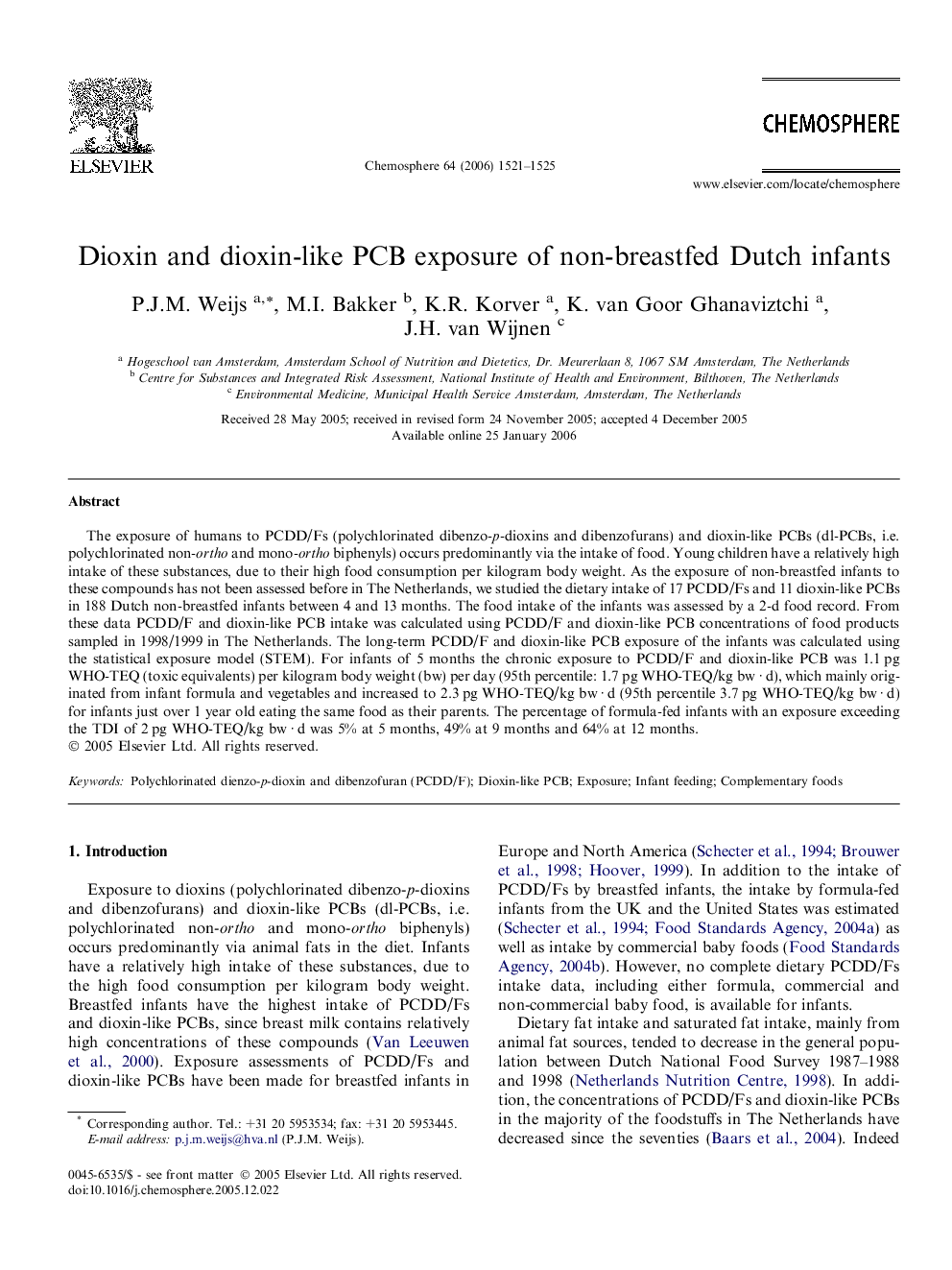| کد مقاله | کد نشریه | سال انتشار | مقاله انگلیسی | نسخه تمام متن |
|---|---|---|---|---|
| 4415503 | 1307749 | 2006 | 5 صفحه PDF | دانلود رایگان |
عنوان انگلیسی مقاله ISI
Dioxin and dioxin-like PCB exposure of non-breastfed Dutch infants
دانلود مقاله + سفارش ترجمه
دانلود مقاله ISI انگلیسی
رایگان برای ایرانیان
کلمات کلیدی
موضوعات مرتبط
علوم زیستی و بیوفناوری
علوم محیط زیست
شیمی زیست محیطی
پیش نمایش صفحه اول مقاله

چکیده انگلیسی
The exposure of humans to PCDD/Fs (polychlorinated dibenzo-p-dioxins and dibenzofurans) and dioxin-like PCBs (dl-PCBs, i.e. polychlorinated non-ortho and mono-ortho biphenyls) occurs predominantly via the intake of food. Young children have a relatively high intake of these substances, due to their high food consumption per kilogram body weight. As the exposure of non-breastfed infants to these compounds has not been assessed before in The Netherlands, we studied the dietary intake of 17 PCDD/Fs and 11 dioxin-like PCBs in 188 Dutch non-breastfed infants between 4 and 13 months. The food intake of the infants was assessed by a 2-d food record. From these data PCDD/F and dioxin-like PCB intake was calculated using PCDD/F and dioxin-like PCB concentrations of food products sampled in 1998/1999 in The Netherlands. The long-term PCDD/F and dioxin-like PCB exposure of the infants was calculated using the statistical exposure model (STEM). For infants of 5 months the chronic exposure to PCDD/F and dioxin-like PCB was 1.1 pg WHO-TEQ (toxic equivalents) per kilogram body weight (bw) per day (95th percentile: 1.7 pg WHO-TEQ/kg bw · d), which mainly originated from infant formula and vegetables and increased to 2.3 pg WHO-TEQ/kg bw · d (95th percentile 3.7 pg WHO-TEQ/kg bw · d) for infants just over 1 year old eating the same food as their parents. The percentage of formula-fed infants with an exposure exceeding the TDI of 2 pg WHO-TEQ/kg bw · d was 5% at 5 months, 49% at 9 months and 64% at 12 months.
ناشر
Database: Elsevier - ScienceDirect (ساینس دایرکت)
Journal: Chemosphere - Volume 64, Issue 9, August 2006, Pages 1521-1525
Journal: Chemosphere - Volume 64, Issue 9, August 2006, Pages 1521-1525
نویسندگان
P.J.M. Weijs, M.I. Bakker, K.R. Korver, K. van Goor Ghanaviztchi, J.H. van Wijnen,